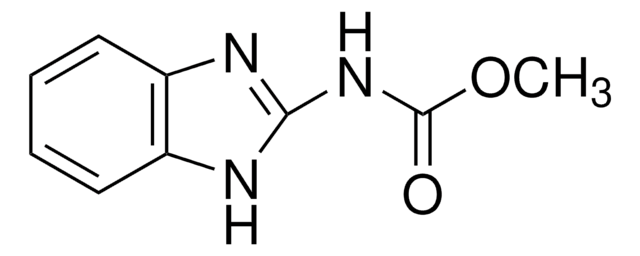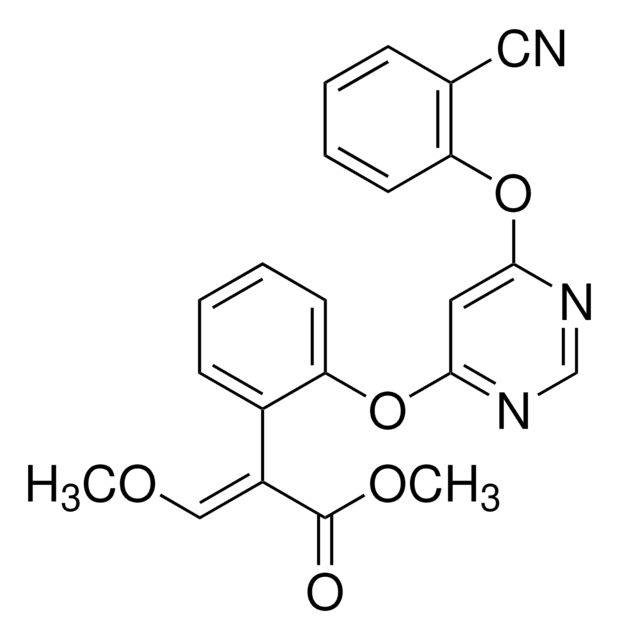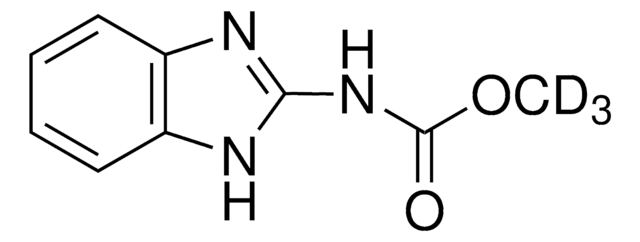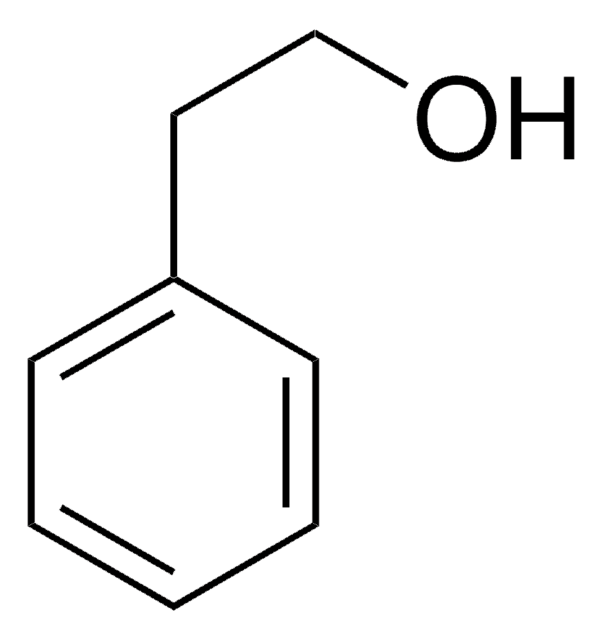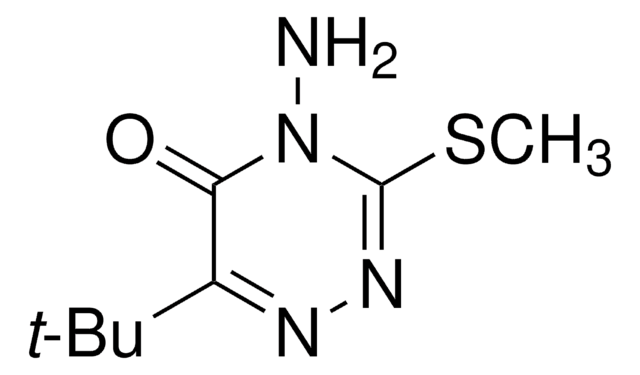49298
Carbendazim-(ring-4,5,6,7-d4)
PESTANAL®, analytical standard
Synonym(s):
Methyl 2-benzimidazole-4,5,6,7-d4-carbamate
About This Item
Recommended Products
grade
analytical standard
Quality Level
isotopic purity
≥98 atom % D
product line
PESTANAL®
Assay
≥95.0% (HPLC)
shelf life
limited shelf life, expiry date on the label
application(s)
agriculture
environmental
format
neat
storage temp.
2-8°C
SMILES string
[2H]C1=C2C(NC(NC(OC)=O)=N2)=C([2H])C([2H])=C1[2H]
InChI
1S/C9H9N3O2/c1-14-9(13)12-8-10-6-4-2-3-5-7(6)11-8/h2-5H,1H3,(H2,10,11,12,13)/i2D,3D,4D,5D
InChI key
TWFZGCMQGLPBSX-QFFDRWTDSA-N
General description
Carbendazim is not approved in the European Union.
Carbendazim has to be monitored in the Multiannual Control Programmes for Pesticides Residues (MACP), run within the EU and EFTA in/on products of plant origin. Maximum residue levels (MRLs) have been set according to Reg (EU) No 559/2011 for Carbendazim for various products of plant and animal origin from 0.01 to 2 mg/kg.
Carbendazim is widely applied in agriculture, horticulture, forest, and gardening to protect plants such as banana, mango, strawberries, oranges, pineapples, pomes, cereals, sugar beet, fodder beet, rapeseed, ornamental plants, medicinal herbs, and turf grasses. In addition, carbendazim is also used in the paint, textile, paper, and leather industries. Due to its severe toxicity and long-term retention in nature, carbendazim is banned in Australia, most of the European Union (EU), and USA.
Carbendazim was first included in Annex I to Directive 91/414/EEC in 2006 by Commission Directive 2006/135/EC. The MRLs of carbendazim in the EU, Japan, and China were 0.1 mg/kg, 10 mg/kg, and 5 mg/kg, respectively.
Application
- Systemic evaluation of the residue and the health risk of carbendazim from the tea garden to brewed tea
- Analysis of carbendazim in a major European river, effluents discharge and assessing the potential sources of carbendazim in the aqueous environment
- Voltammetric determination of carbendazim in orange juice by glassy carbon electrode modified with hybrid material
- To assess and compare the differential influence of tebuconazole and carbendazim, individually and combined, on soil microbial activity
- Quantitative detection of carbendazim in citrus fruit and cabbage samples by a photothermal assay based on a thermometer readout
Legal Information
Not finding the right product?
Try our Product Selector Tool.
Signal Word
Danger
Hazard Statements
Precautionary Statements
Hazard Classifications
Aquatic Acute 1 - Aquatic Chronic 1 - Muta. 1B - Repr. 1B - Skin Sens. 1
WGK
WGK 3
Flash Point(F)
Not applicable
Flash Point(C)
Not applicable
Choose from one of the most recent versions:
Certificates of Analysis (COA)
Don't see the Right Version?
If you require a particular version, you can look up a specific certificate by the Lot or Batch number.
Already Own This Product?
Find documentation for the products that you have recently purchased in the Document Library.
Our team of scientists has experience in all areas of research including Life Science, Material Science, Chemical Synthesis, Chromatography, Analytical and many others.
Contact Technical Service